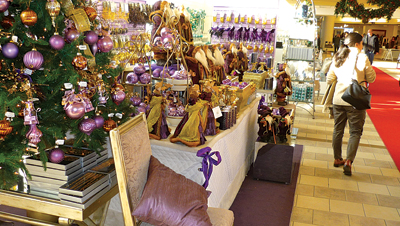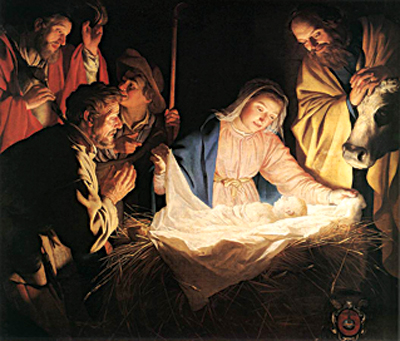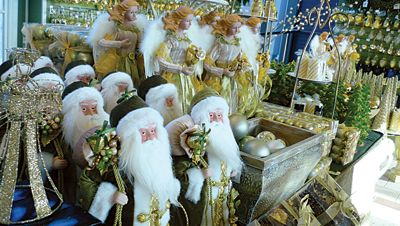A sneak peek into celebrating Christmas and all that it entails for Nepali Christians
I believe we all have our own versions of this very special festival that is celebrated at the end of each year on December 25 by Christians all around the world. All thanks to the numerous shows on television and smart marketing strategies with gratifying sales and discounts, our memory is fully synchronised to the immaculately decorated buildings and shopping malls, songs about Rudolf the red nosed reindeer, Santa Claus and his magical elves from the north pole, massive Christmas trees with attractive presents underneath them, patterned sweaters, colourful candies, crunchy-cookies, creamy cakes and stuffed turkeys to add to the occasion. Church bells ringing in the background and carol groups singing “away in a manger, no crib for his bed...” A truly joyous occasion indeed and how well we’ve replicated the same magical world in our own Nepali households, mildly adjusting it to our tastes and culture.
 I used to love Christmas for the three great reasons or 3Cs as I recall - cardigans, cakes and carols. I always thought Christmas would be incomplete without these three. I remember choosing my favourite colours at the woolen store and whenever I spotted my mother with those needles, it got me all excited. Sometimes she’d make me stand straight whilst she’d meticulously measure me up to see if the arm size or the neck line was just right and I would look forward to the day when I would finally get to wear it with my matching new dress on Christmas Day. Just like Dashain is incomplete without new clothes, Christmas is incomplete without one too but as I grew older I started thinking otherwise. I don’t know how the transition happened but I used to dread wearing new clothes to church on Christmas. The ‘right out of the factory’ smell of clothes and the neat and shiny outfit was so overrated that the obvious glance while walking down the pew was rather embarrassing.
I used to love Christmas for the three great reasons or 3Cs as I recall - cardigans, cakes and carols. I always thought Christmas would be incomplete without these three. I remember choosing my favourite colours at the woolen store and whenever I spotted my mother with those needles, it got me all excited. Sometimes she’d make me stand straight whilst she’d meticulously measure me up to see if the arm size or the neck line was just right and I would look forward to the day when I would finally get to wear it with my matching new dress on Christmas Day. Just like Dashain is incomplete without new clothes, Christmas is incomplete without one too but as I grew older I started thinking otherwise. I don’t know how the transition happened but I used to dread wearing new clothes to church on Christmas. The ‘right out of the factory’ smell of clothes and the neat and shiny outfit was so overrated that the obvious glance while walking down the pew was rather embarrassing.

Very few families’ baked cakes back then and readymade cakes were not in high demand; at least I don’t remember us buying one. Cakes had to be ordered weeks in advance from bakeries but we were fortunate to have an enthusiastic mother who would spend hours after dinner baking fruit cakes and brownies in an old fashioned oven. Cakes are like the show-stopper of the season especially while delivering goodies or bhaag, an assortment of dishes, to our Hindu friends and neighbours. While we expect Sel rotis, peero aloo-dum, mula ko achaar, sweets and fruits from our friends during Dashain, they’d expect the same from us during Christmas and it’s one of the fun activities that keep us engaged during the festival. I wonder if our western counterparts can keep up with our age old Sel making tradition. We usually prepare medium sized double looped bread as opposed to the most common single loop doughnut shaped sel. Sel planning starts months in advance, shopping and preparations would follow right after and on one allotted day everyone gathers around to watch gifted people in the family work wonders and mostly to take a bite of those hot delicious roti. It’s funny how the whole neighbourhood knows which household is making sel rotis on particular days, maybe it’s the unnecessary commotion and laughter or just the scintillating aroma of the rotis being prepared. It’s one of the best family bonding times ever.

I disagree with my friend who once told me that for us it’s only about the ‘sweet stuff’ and bakery items during Christmas. Hot, sour and spicy food items are very much a part of the menu. For non-vegetarians like me, Christmas is incomplete without meat. Turkey is not available easily so I’ll settle for pork roast, beef or buff curry, mutton biryani, tandoori chicken or sweet and sour chicken and fried fish. Like any other festival, food is very important during Christmas. We come wisely prepared with antacid well ahead of the game. ‘It only comes once in a year’ spirit seemingly helps digest all the guilt.
Carol singingis one of the major events. Carol groups visit every other Christian household days before Christmas, singing glorious hymns in Nepali -spreading the good news about the birth of Jesus. Outdoor Carol singing tradition has transformed over the years but traditionally you’d find a small group of carefree youngsters standing out in the wintry cold, wrapped up in caps, mufflers and jackets, singing and clapping with almost frozen, numb hands. Their harmonious carols are usually accompanied by a guitar, a madal, a tambourine and a cold growling stomach. It’s a fulfilling night nevertheless because every household invites them over for a bowl of hot thukpa or wanton soup, maybe momos if you’re lucky. Chowmien, alo o and sel rotis are common too. I was a part of such a group when I was in Sunday school and it was a rich and rewarding experience no doubt.
o and sel rotis are common too. I was a part of such a group when I was in Sunday school and it was a rich and rewarding experience no doubt.
The weeklong events and activities builds up to the grand day - Christmas morning service at the church, where you’re greeted with a lively ‘Jaimasih’ and a ‘Merry Christmas’ at the church entrance. Apart from the usual church goers you’d be surprised to notice new faces amongst the crowd neatly dressed with pretty button flower attached to their coat lapels. After the much awaited special sermon from the local pastor, everyone gathers outside the church compound for the famous ‘love feast’ complete with a plate of hot steamed rice, daal, vegetables, achaar and the legendary saag and maasu. It all ends with the occasional friendly nods, awkward smiles and snapshots and not to forget the sore throats from the late night carol singing and the leftovers to last you for days.
The good news
Luke 2:10-11
King James Version(KJV)
“And the angel said unto them, Fear not: for, behold, I bring you good tidings of great joy, which shall be to all people. For unto you is born this day in the city of David a Saviour, which is Christ the Lord”

SINTERKLAAS
Saint Nicholas of Myra or modern day Turkey was the inspiration behind the American version of Santa Claus. Nicholas was a rich and generous man who lived in the 4th Century A.D. He gave gifts to the poor children and brought joy in their lives. St. Nicholas later became known as der Weinachtsmann in the Protestant areas of central and northern Germany and Father Christmas in England or Sinter Klaas according to the Dutch. The Dutch settlers who arrived in America in the 17th Century introduced the Sinterklaas festivities.

As I matured over the years, I took the liberty to add one more C to the 3Cs I mentioned earlier on and that is Christ. He is the reason why we celebrate Christmas and so as long as the real meaning is not crushed by our modern approach to this celebration. I think it really does not matter how you choose to celebrate one. Adorn an angel on top of your evergreen tree or a readymade Chinese tree, fix a bright paper star atop your freshly painted roof, decorate your house with magnificent lights and streamers, hang a red sock above your fire place if you please, spend thousands on gifts for your loved ones or maybe send a greeting card to show you care, make miniature models of a manger with Joseph alongside Mary holding baby Jesus and of angels, shepherds and sheep, invite the less fortunate for brunch, give out gifts to the orphans and poor – it’s a season of giving and thanksgiving. If only the true spirit of Christmas would continue all year round. It’s something we can only hope for but special occasions like these make us realize that things can be better. Be it the Western way or the Nepali way, the true spirit and meaning of Christmas will forever remain unchanged.











